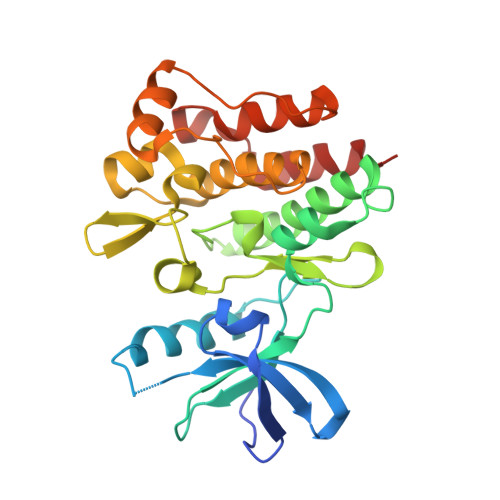Structural biology contributions to the discovery of drugs to treat chronic myelogenous leukaemia.
Cowan-Jacob, S.W., Fendrich, G., Floersheimer, A., Furet, P., Liebetanz, J., Rummel, G., Rheinberger, P., Centeleghe, M., Fabbro, D., Manley, P.W.(2007) Acta Crystallogr D Biol Crystallogr 63: 80-93
- PubMed: 17164530
- DOI: https://doi.org/10.1107/S0907444906047287
- PubMed Abstract:
Chronic myelogenous leukaemia (CML) results from the Bcr-Abl oncoprotein, which has a constitutively activated Abl tyrosine kinase domain. Although most chronic phase CML patients treated with imatinib as first-line therapy maintain excellent durable responses, patients who have progressed to advanced-stage CML frequently fail to respond or lose their response to therapy owing to the emergence of drug-resistant mutants of the protein. More than 40 such point mutations have been observed in imatinib-resistant patients. The crystal structures of wild-type and mutant Abl kinase in complex with imatinib and other small-molecule Abl inhibitors were determined, with the aim of understanding the molecular basis of resistance and to aid in the design and optimization of inhibitors active against the resistance mutants. These results are presented in a way which illustrates the approaches used to generate multiple structures, the type of information that can be gained and the way that this information is used to support drug discovery.
Organizational Affiliation:
Novartis Institutes for Biomedical Research, Basel, Switzerland. sandra.jacob@novartis.com















